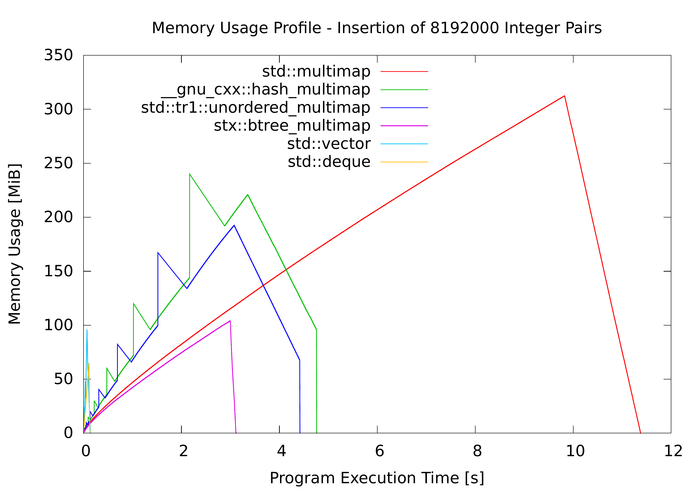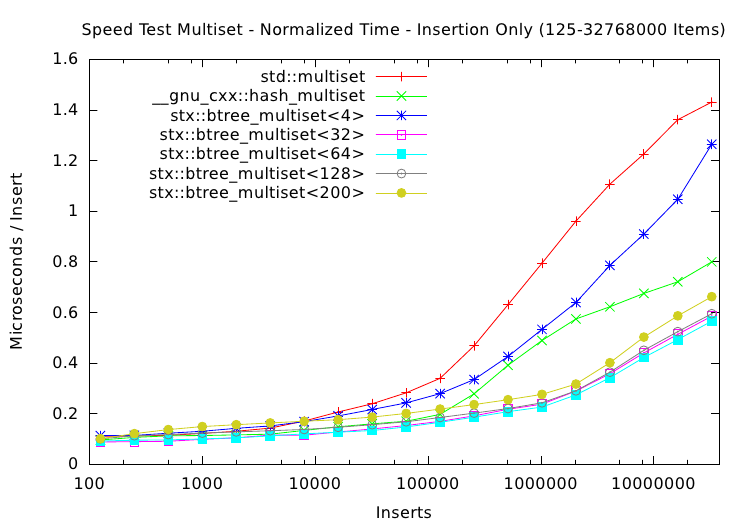STX B+ Tree Speed Test Measurements on Raspberry Pi (Model B)
Posted on 2013-05-06 09:48 by Timo Bingmann at Permlink with 1 Comments. Tags: #stx-btree #frontpage
The Raspberry Pi is maybe one of the most hyped embedded system projects in the last year, and I also got myself one for experiments. People are doing amazing things with this Linux-in-a-box SoC. Doubtlessly, the popularity is due to the standardized platform and a large community forming around it, which makes fixing the many small problems with Linux on ARM systems feasible. For me, the Raspberry Pi is an alternative architecture on which to test my algorithms and libraries, which exhibits somewhat different characteristics than the highly optimized desktop CPUs.
So I decided to run my STX B+ Tree speed test on the Raspberry Pi Model B, because most people use the SoC for multimedia purposes and little other memory performance data is available. The B+ tree speed test gives insight into the platform's overall memory and processing performance, and thus yields a better assessment of how useful the system is for general purpose applications (unlike multimedia decoding). Most benchmarks focus solely on floating point or integer arithmetic, which alone are very poor indicators for overall system performance. The Raspberry Pi forums say it has performance similar to a "Pentium 2 with 300 MHz", but that is for arithmetic.














